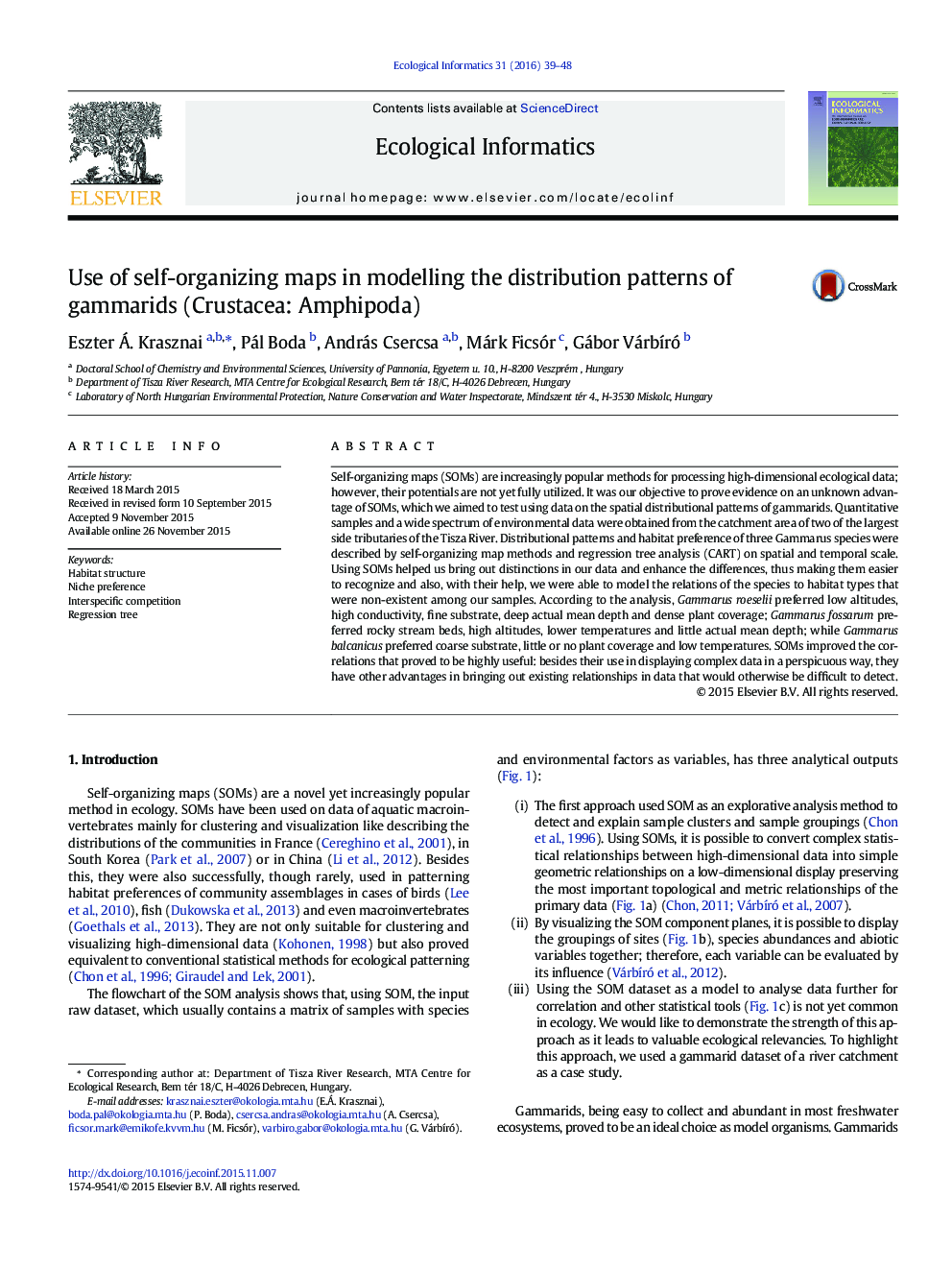| Article ID | Journal | Published Year | Pages | File Type |
|---|---|---|---|---|
| 6295709 | Ecological Informatics | 2016 | 10 Pages |
â¢We present the spatial distributional patterns of three Gammarus species.â¢We test the use of self-organizing maps (SOM) in distribution modelling.â¢We compare the raw and SOM-based datasets in describing distributional patterns.
Self-organizing maps (SOMs) are increasingly popular methods for processing high-dimensional ecological data; however, their potentials are not yet fully utilized. It was our objective to prove evidence on an unknown advantage of SOMs, which we aimed to test using data on the spatial distributional patterns of gammarids. Quantitative samples and a wide spectrum of environmental data were obtained from the catchment area of two of the largest side tributaries of the Tisza River. Distributional patterns and habitat preference of three Gammarus species were described by self-organizing map methods and regression tree analysis (CART) on spatial and temporal scale. Using SOMs helped us bring out distinctions in our data and enhance the differences, thus making them easier to recognize and also, with their help, we were able to model the relations of the species to habitat types that were non-existent among our samples. According to the analysis, Gammarus roeselii preferred low altitudes, high conductivity, fine substrate, deep actual mean depth and dense plant coverage; Gammarus fossarum preferred rocky stream beds, high altitudes, lower temperatures and little actual mean depth; while Gammarus balcanicus preferred coarse substrate, little or no plant coverage and low temperatures. SOMs improved the correlations that proved to be highly useful: besides their use in displaying complex data in a perspicuous way, they have other advantages in bringing out existing relationships in data that would otherwise be difficult to detect.
